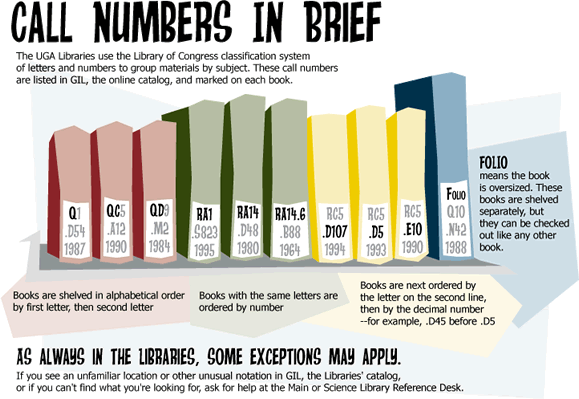Call Numbers Explained
Library of Congress Classification
The UGA Libraries use the Library of Congress (LC) classification system, which organizes materials by subject. Library holdings are shelved by call number. Each call number is unique; call numbers serve as subject identifiers and as addresses for locations in the collections. Call numbers generally incorporate the subject classification, a code for the author, and year of publication.
Here's an example of how the call number might appear on the spine of a book and how it identifies the subject matter:
DNA Repair and Mutagenesis by Friedberg et al.
QH QH = Science(Q)/Natural History(H)
467 467 = Genetics
.F753 .F753 = Indicates a specific work by author(s)
19951995 = Year of Publication
Location codes are used to indicate the address or location of the item in relation to the rest of the collections. Some books have a location code at the beginning of the call number indicating a specific collection to which they belong. For example:
Sci Ref = found in the Science Library's Reference collection
E
160
.S65
1994
Other location codes that may appear on library materials:
F or Folio = Oversized materials collection
R or Ref = Main Library's Reference collection
Juv = Juvenile works found in the Curriculum Materials Library
There are a few collections in the UGA Libraries that do not use the Library of Congress classification:
- Reserves
- Georgia, U.S. and Canadian government documents
- Main Library Current Periodicals (shelved alphabetically, by title)
- Main and Science Library Leisure Reading Books
- In Process Collection
- Curriculum Materials Library

